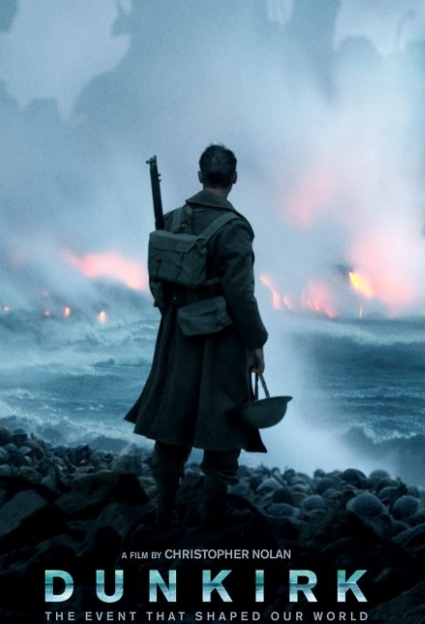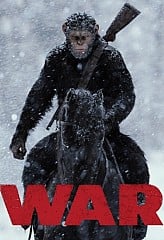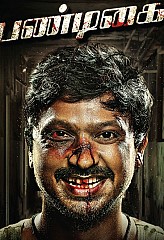Dunkirk - Visitor Review
Home > Visitor Columns

Behindwoods.com isn't responsible for the views expressed by the visitor in this column. The visitor claims that this column is his/her own. If the column infringes any copyrights that you hold, please email us at columns@behindwoods.com.
A Christopher Nolan film and I need not say more. Let’s cut to the chase just like the movie does. Dunkirk is not a 'war' nor a 'historical' movie in its traditionally understood sense. The movie does not record all the historical facts of Operation Dynamo on which it’s based on nor does it go into the actual war in detail as Saving Private Ryan does. Make no mistakes; the movie does speak of war and its madness. What Nolan aims for is to put the audience in the middle of Dunkirk on three different planes. On ground we follow, Fionn Whitehead, on air Tom Hardy and on water Mark Rylance.
In an era dominated by 3D, VR and green mat, Christopher Nolan has once again gone back to reiterating the importance of film. The movie is shot majorly with 70MM IMAX film cameras and some portions have been shot with 65MM film. Nolan's biggest collaborator in this movie is cinematographer Hoyte Van Hoytema who had earlier worked with him in Interstellar. Visually Dunkirk is the most immersive experience I have ever had at a theatre and it is literally virtual reality without the goofy goggles. The aerial shots are jaw dropping & insane which makes the audience go 'how did they shoot that' now and then. The camera placements are also enticing drawing the audience into the cockpit of the spitfire, into a drowning fighter vessel and into the vastness of the rescue operation. It may be early but Mr Hoytema should win the Oscar for cinematography early next year. Unfortunately, all film projections have been discarded in India and only digital projections are available so there is no way to experience the movie that way it’s meant to be. The movie is designed for IMAX and at least it should be viewed in a digital IMAX.
The importance of sound to film is best highlighted in the movie. Every bullet, every bomb dropped and the whirring fighter jets shakes the audience from head to toe fully capturing the chaos of the war. Another nod possibly at the Oscars for the outstanding work in the movie for sound designing/editing and mixing on the cards. Hans Zimmer - Nolan is certainly one of the most important artistic collaborations in recent times. The score of Dunkirk is unlike what Hans has done before in feature films. Although the trademark Hans is at display with synth based keys, loud bangs and elongated strings to stir emotions, the score does not stand independent and it’s mixed into the visuals, sound design. In that sense it's Hans Zimmer's best work within a movie. The ticking clock and the gasping breath are at the core of the musical landscape of this motion picture. The music and sound in Dunkirk are stitched into the fabric of the visuals.
CGI (Computer generated images) are sparingly used as in other Nolan films and the practical effects (visual effects) are used extensively which aids the atmosphere immensely. As far as dogfights go, there is no more accurate and immersive recreation of it in films before. The underwater scenes also create maximum impact. The structure of Dunkirk is also written in a nonlinear style generally associated with Nolan. Though Dunkirk is no Memento, three different planes experience the event at three different speeds and they all intersect at various levels. Such a treatment for a film set in the backdrop of war is first of its kind and the role of the long time collaborator editor Lee Smith also becomes crucial. For a film which envisions to capture chaos in this structure, to make it create the impact it did both on emotional and physical levels while also being taut is a tremendous achievement. There is also the point of view ‘build up’ shots which ramp up the tension and scale like never before.
The casting of the film broke some stereotypes as Nolan had pointed out in recent interviews. Young people at infantry were played by actors the age of the role. The casting of music rock star Harry Styles also raised some eyebrows and the entire cast did their part as intended aiding the bigger scheme of things. As Dunkirk is not a character driven film but more an event driven survival thriller, no one person is a stand out character. Special mention to Tom Hardy and Kenneth Branangh. At the emotional heart of Dunkirk lies Mark Rylance's Mr Dawson. In the midst of all the bombing, his portrayal adds depth to the character and captures the spirit of allied forces in the face of adversity.
Nolan's take on the madness is cold, impersonal and it because of that approach, the movie manages to move the audience just with sheer visuals & zero melodrama. Part of the criticism from some film followers like Peter Sciretta and Raja Sen is because of expectations of personal stories of soldiers with some back stories as in regular war films. The treatment of the screenplay as explained by the auteur is creating empathy with just the physicality of the situation the actors undergo by not leaving the battlefield. That and the structure are the ground breaking experiments Nolan has brought to the table for the genre. There is also some criticism that the linear narration of the story would have been equally good or better. The narration begins at three different time lines which intersect at an event. The three sets of people experience the intersection/event at different speeds. The air is the first & then the ships and finally land. It is also the repercussions and the confusion that ensues at three different levels which make up the shortest screenplay written by Nolan till date. Dunkirk is a harrowing and intense movie going experience which only focuses on three sets of people who were part of the rescue mission which lasted a week.
Above all, Dunkirk emphasizes that even volunteering for a cause is heroism and in the face of adversity, to survive is, victory. In essence, it is the 'spirit' that was seen at Dunkirk during World War II which lies after all the layers are peeled away from the screenplay. Dunkirk is a phenomenally well-made film and deserves all the accolades showered on it. If the script/story is left aside, purely from a directorial point of view, this could be Nolan's best-directed film till date. Simply put Dunkirk is a master class in film making and visual story telling. It’s immersive like never before and more than anything it pushes and bends the boundaries of cinema to dizzying heights. An Instant classic.
Demands to be viewed multiple times at an IMAX!
sriramanadvocate@gmail.com
Please send your column to columns@behindwoods.com.

OTHER LATEST VISITOR COLUMNS
RELATED NEWS
- ''How can a human think like this?'' - Karthick Naren on Dunkrirk
- Dunkirk - Behind the frames video
- Hot: Review on Christopher Nolan’s 'Dunkirk' is out. Check it!
- ''It will be one of the greatest stories in human history''- Christopher Nolan
- Christopher Nolan kickstarts his next epic action thriller!
- About Avatar 2 and Nolan's next...


